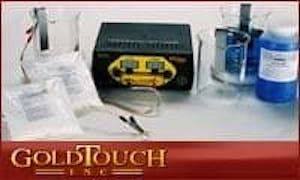
-----
Switching from Brush Cadmium plating to Barrel cadmium plating
Q. Hello My name is Alayna Huckleby, I'm and Industrial Engineer at Northrop Grumman. We are currently using a Brush Cadmium plating process for PH stainless steels (17-4, 15-5) parts such as small bushings, washers, and spacers. We would like to switch over to a mini barrel plating process for these small parts.
My knowledge about electroplating is very limited so I wanted to know if it was possible to:
(1) use the same chemicals we currently use for the barrel process as well? We are using Nitric acid for passivation (we already have a tank set up for this process), Sulfuric acid for activation (4%), and Cadmium LHE from Sifco solutions. Is it ok to use these exact chemicals in a barrel design and not use a cadmium cyanide process? [We do not need to heat/cool the solutions or bake during current process, ideally we would like to keep it this way].
(2) Use the same rectifier we already have..our rectifier has a voltage output and Amps output of 20V/30A and is 115 VAC. And
(3) is there an equation to calculate the time required to plate a specific thickness? In the current process we use Time (amp-hr)= (surface area) * (required thickness) * (solution factor (70 for Cad LHE)) * 1.1. can we use the same equation or is it different..(I'm assuming it's not the same and I would have to use some form of Faraday's law of electrolysis, but I'm not familiar with it). Any information would be helpful, thank you!
- St. Augustine, Florida
June 23, 2020
A. All the chemicals will be different. Barrel plating onto stainless steel will be quite a challenge. You will need a Nickel Chloride strike (Woods Strike). 20 volts will be adequate. 30 amps will be about right for up to 1.5 square feet of cathode surface area. So it all depends on the size of your barrel, commercial barrels are available from the size of a beer can up to 18" x 48". The time to thickness will require experimentation. A general starting point rule is to take one 1/3 of the normal rack amperage, assume the parts make contact 1/3 of the time, and plate 3x as long in a barrel. You seriously need face/face help. There are two distributor companies in Florida with very knowledgeable field service men, I cannot name them here, but you really need to go find one of them.

Robert H Probert
Robert H Probert Technical Services
Garner, North Carolina

June 24, 2020
Q. Thank you Robert, this was very helpful. I will take your advice and try to reach out to a distributer for more clarification.
Alayna Huckleby [returning]- St. Augustine, Florida
June 25, 2020
adv.
Brush plating equipment, chemicals, and supplies from Gold Touch

Q, A, or Comment on THIS thread -or- Start a NEW Thread